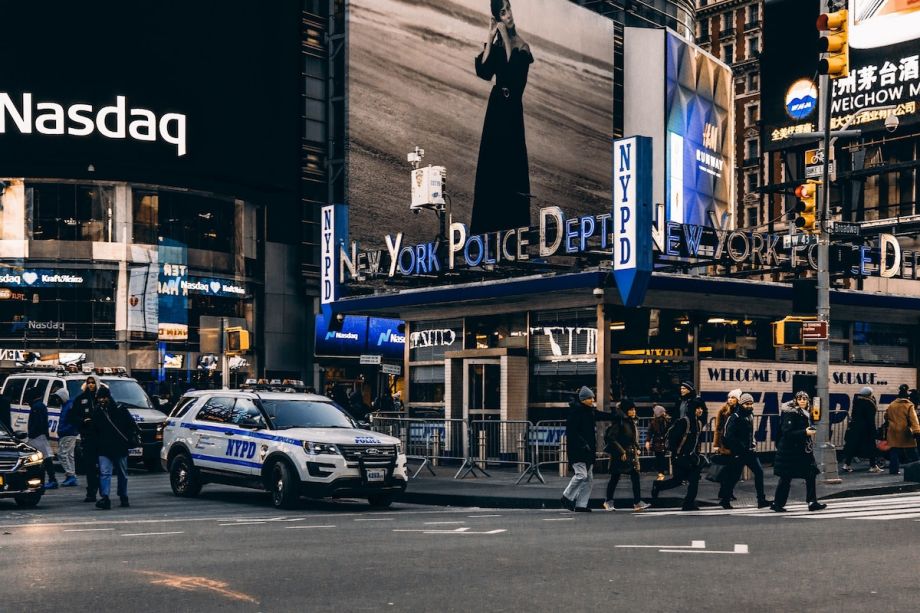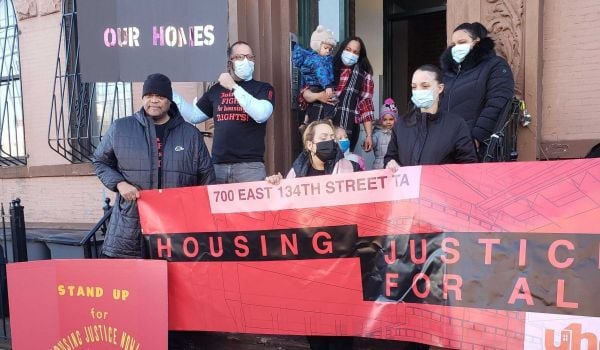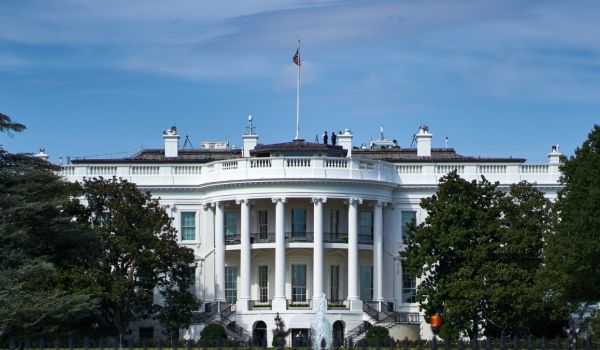Land is a treasured asset in New York City; much of it has already been developed, and the few undeveloped lots are highly sought after. But the city’s various agencies also own vacant parcels in various states of use. Constructing housing on these lots would be far cheaper than acquiring land on the private market.
At least 145 of these lots are used by the New York City Police Department to park their vehicles, leading some organizers to ask: is parking more important than housing?
A new interactive map by the East New York Community Land Trust shows where NYPD-owned vacant lots and parking lots are across the city. It’s part of an ongoing campaign to get the NYPD and other city agencies to turn the lots — some empty, some filled with junk and derelict vehicles, and many used for NYPD members’ personal vehicles — over to local community land trusts.
The map, released as part of a new “digital blackpaper,” is intended to be tool for local communities to find out where the NYPD is sitting on land that could theoretically be turned over for public use. “Part of the purpose of the digital map is to inspire organizing across the issue,” says Brianna Soleyn of East New York Community Land Trust.
The blight of abandoned lots has long been a point of grievance for residents of East New York, who have dealt with vacant lots since at least the 1970s, when the city was facing a fiscal crisis and some officials argued for reducing services in blighted neighborhoods.
Rolling over each NYPD icon on the map presents a pop-up that tells users what city agency currently operates the lot. Clicking on an icon will link you to that parcel’s entry in the New York City Zoning and Land Use Map.
The blackpaper follows up on a paper released by East New York CLT a year ago that revealed there were 145 lots held by the NYPD, 73 of which were underutilized. According to the blackpaper, most of the NYPD lots are poorly maintained, “overgrown with weeds, trash strewn about, and perfect sites for dumping.”
Not every NYPD parking lot is owned by the NYPD — for instance, a parking lot on 54th Avenue in Queens is owned by “Elmwier Cemetery Corporation Inc,” a nonprofit that owns Mount Zion Cemetery. One lot on Linwood Street in Brooklyn is owned by the Department of Housing Preservation and Development (HPD).
The lots are clustered in certain neighborhoods: Bushwick has the most, with 27 NYPD lots. East New York has 21 lots; 30,000 square feet of that is zoned for residential use and 70,000 square feet is zoned for manufacturing. The residential lot space in East New York could hold 45 two-bedroom apartments with commercial ground floor space, according to the blackpaper.
The report also looked at lots in Ocean Hill-Brownsville (18 lots), as well as Hunts Point and Mott Haven-Point Morris (seven, between both neighborhoods) in the Bronx. East New York CLT says that the city has given away NYPD lots before, including one in Manhattan and one in Queens that were turned over for the construction of mixed-use development.
The East New York CLT asked HPD about the lot it owns on Linwood Street in Brooklyn. The lot has a history of being promised for affordable housing projects, but it’s unclear why it was never developed.
According to the East New York CLT’s examination of public records, the lot was originally part of a 1980s-era urban renewal plan to create 1,300 single-family Nehemiah Homes – a cluster of homes built in collaboration with clergy working to revitalize neighborhoods that had vacant or burnt-out lots.
“They’ve been using it to park their personal vehicles for years…we don’t know how that happened,” says Hannah Anousheh, coordinator at East New York Community Land Trust, speaking of the HPD-owned lot.
In a statement to Next City, HPD said, “We are fully committed to building affordable housing here and on other public sites in the area, so it’s exciting to have East New York CLT’s support. Public land is a precious and finite resource in New York City that we take very seriously, and any plans to build on these sites must be responsive to both community preferences and citywide needs to address the affordable housing crisis. That is the goal for our competitive proposal review process and we look forward to engaging with the CLT and other community members as part of that process.”
HPD will release a request for proposals (RFP) for the lot in the next few years, a spokesperson said, and affordable housing organizations will be allowed to pitch their vision for it. But there is currently no set time for that RFP to be released, and the lot is just one of many in the department’s pipeline.
At least one NYPD lot is quite literally filled with junk. An NYPD lot viewed by Next City at the corner of Berriman Street and Sutter Avenue appeared to be filled with derelict vehicles. It contained nine vehicles with significant damage, only one of which had a license plate. It also held 16 motorcycles, four vehicles whose condition was unclear and an RV that was boxing in two more abandoned vehicles, one of which had vines growing over it and broken sidelights.
The CLT says it held four community visioning sessions and polled 141 East New York residents to see how neighbors wanted to use the land. They found most people wanted deeply affordable housing. Residents also asked for community spaces and about a third asked for park space.
The trust also hired architect Nandini Bagchee to develop a community master plan for eight of the lots in East New York’s Industrial Business Zone.
While the neighborhood has lacked investment, the city has invested plenty into policing East New York: According to a Bloomberg analysis, the 75th precinct in East New York spent more on overtime for its officers than any other precinct in the city, dishing out $7.8 million in the 2020 fiscal year.
The parking practices of the NYPD have long been a source of scrutiny. A study released in April tracked how pervasive the issue is. Surveys of all 77 NYPD station houses found that at 70 of the buildings, police were parking on sidewalks; they were also repeatedly parking in crosswalks, bike lanes, in front of fire hydrants and generally impeding pedestrians and forcing them to walk into traffic.
The study looked at years of Google Street View data and found this has been the practice for at least 12 years, though the researcher found the issue was prevalent in the 1980s and cited a 1995 New York Times article that called out the practice. An NYPD spokesperson speaking to Bloomberg Citylab attributed the phenomenon to a lack of parking space for NYPD officers in many neighborhoods, despite the fact that the NYPD has at least 145 lots across the city for parking both police vehicles and personal vehicles. But the NYPD says it has 9,000 vehicles and 115 motorcycles in its fleet.
Asked where the NYPD would park their personal vehicles if the lots were turned over, the CLT’s co-founder Hannah Anouseh responds, “They should take the train like everyone else!”
She says they initially thought about mapping out alternative parking spots but decided against it: “I’m sure they can figure that out.”
This story was co-published in collaboration with Shelterforce, the only independent, non-academic publication covering the worlds of affordable housing, community development and housing justice.
This article is part of Backyard, a newsletter exploring scalable solutions to make housing fairer, more affordable and more environmentally sustainable. Subscribe to our weekly Backyard newsletter.

Roshan Abraham is Next City's housing correspondent and a former Equitable Cities fellow. He is based in Queens. Follow him on Twitter at @roshantone.


















